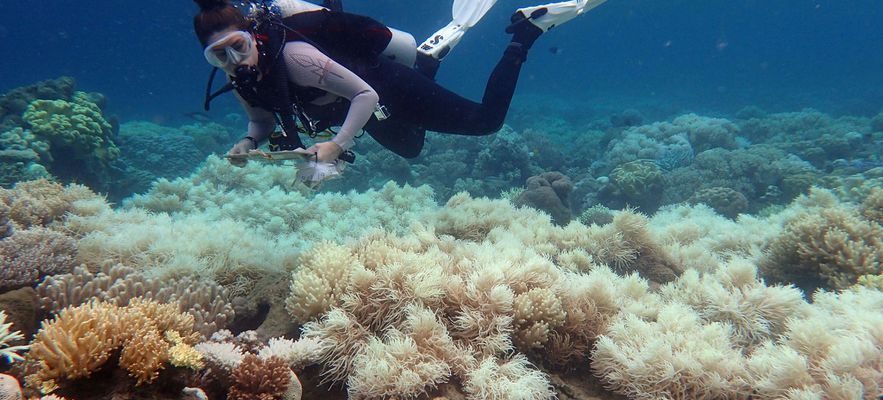Octocrylene, a chemical UV filter present in many cosmetic products, has been the subject, since May 26, 2023, of a request for restriction due to environmental and potentially health risks, according to information from franceinfo. This component of our sunscreens is in fact currently assessed within the framework of the “Reach” regulation, a European census of chemical substances carried out in France by the National Food Safety Agency (Anses).
The first results of ANSES’s risk management analysis procedure, still in progress, revealed that this substance, rapidly degraded, was transformed into benzophenone, an ingredient known for its toxicity. The organization therefore recommends that the French government demand a commercial withdrawal of this molecule from the European Union.
Environmental and health risks
However, since the end of May 2023, according to several internal sources collected by franceinfo, the Ministry of Ecological Transition has been experiencing an “unprecedented blocking situation” concerning the official request from ANSES. The government would not directly seek a complete ban on octocrylene in cosmetics, as advised by the agency. Yet ANSES, like many scientists, explicitly recommends a “restriction at European level” and the cessation of its use in sunscreens. The government told him, to franceinfo, that he would bring this ban, but only “among the other options studied with a view to eliminating the risks associated with octocrylene”.
Reserves from the executive which “echo the lobbying of the chemical and cosmetics industry”, according to Philippe Lebaron, professor of microbiology and marine ecology at Sorbonne University. “There have been enough scientific articles on octocrylene and its dangers for at least three years to challenge companies. But this molecule has two advantages that the big cosmetic companies do not want to give up despite the risks: it is very effective as UV protection, but above all, it is cheaper than the others”, analyzes with L’Express the researcher, author of two studies in partnership with the CNRS on the environmental and health risks of the substance.
Octocrylene is present in many cosmetic formulas other than sunscreens such as shampoos, or anti-aging creams. “The industries that produce octocrylene know that this molecule is contaminated with benzophenone and that the latter cannot be eliminated in its entirety during production”, can we read in the introduction to his article in the Chemical Research in Toxicology of March 2021. However, octocrylene systematically degrades into benzophenone because there is currently no stable formula on the market. The concentration of benzophenone in the products also increases very quickly because the aging of the product, as soon as it is opened, promotes degradation.
Benzophenone, a known toxic substance
“Unlike octocrylene, which is still being discovered, benzophenone is already the subject of numerous studies: we know this molecule well and it is established in the scientific field that it is toxic for the marine ecosystem, that ‘It is carcinogenic and it is an endocrine disruptor,’ lists Philipe Lebaron.
A scuba diver examines bleached corals on Orpheus Island in a photo taken by Greg Torda and provided by the Australian Research Council (ARC) Center of Excellence for Coral Reef Studies
© / afp.com/Greg Torda
In high bathing areas and in tourist areas with underwater activities (snorkeling, shallow diving), the molecule present in the sunscreen is diluted when entering the water and attacks the fauna and aquatic flora. “At low concentrations, it hinders the reproduction of microalgae and causes coral bleaching, a quickly irreversible phenomenon. At high concentrations, it is quite simply lethal and kills aquatic organisms”, confides the scientist to L’Express.
Philippe Lebaron
In humans, benzophenone easily passes the skin barrier and enters our body. “Humans absorb this molecule so well that it is even detectable in breast milk and then in children in the event of pregnancy”, warns the researcher. The component is a contact allergen and a carcinogen that particularly affects the liver. It is also classified as an endocrine disruptor, meaning it interferes with normal hormonal functioning.
Continue to protect yourself from UV rays
“A restriction on the quantities of octocrylene is not sufficient because the degradation towards benzophenone is inevitable and toxic even at low doses. As soon as there is benzophenone, there is a proven danger. The total ban in cosmetic products, it is the only solution”, assures the professor of microbiology, who encourages consumers to turn to formulations free of the molecule.
Indeed, protection from the sun remains essential for health. Exposure to ultraviolet (UV) rays promotes the development of melanomas and carcinomas (cancers). Although octocrylene is more commonly found in lower-end sunscreens, consumers on tighter budgets will be able to find affordable options without toxic components.
“Continuing the use of this risky molecule does not make sense for companies because perfectly viable alternatives exist, even commercially. The proof: many sunscreens are sold at affordable prices, without octocrylene. beachgoers and vacationers, just watch the labels. The molecule has only one name in the compositions: “octocrylene”. Easy to spot… and avoid!”, concludes Philippe Lebaron.
